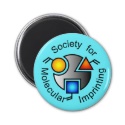|
|
Reference type: Journal
Authors: Lucci P, Núñez O, Galceran MT
Article Title: Solid-phase extraction using molecularly imprinted polymer for selective extraction of natural and synthetic estrogens from aqueous samples.
Publication date: 2011
Journal: Journal of Chromatography A
Volume: 1218
Issue: (30)
Page numbers: 4828-4833.
DOI: 10.1016/j.chroma.2011.02.007
Alternative URL: http://www.sciencedirect.com/science/article/pii/S0021967311002020
Abstract: A method is proposed for the clean-up and preconcentration of natural and synthetic estrogens from aqueous samples employing molecularly imprinted polymer (MIP) as selective sorbent for solid-phase extraction (SPE). The selectivity of the MIP was checked toward several selected natural and synthetic estrogens such as estrone (E1), 17β-estradiol (β-E2), 17α-estradiol (α-E2), estriol (E3), 17α-ethinylestradiol (EE2), dienestrol (DIES) and diethylstilbestrol (DES). Ultrahigh pressure liquid chromatography (UHPLC) coupled to a TSQ triple quadrupole mass spectrometry (QqQ) was used for analysis of target analytes. The chromatographic separation of the selected compounds was performed in less than 2 min under isocratic conditions. The method was applied to the analysis of estrogens in spiked river and tap water samples. High recoveries (>82%) for estrone, 17β-estradiol, 17α-estradiol, estriol and 17α-ethinylestradiol were obtained. Lower but still satisfactory recoveries (>48%) were achieved for dienestrol and diethylstilbestrol. The method was validated and found to be linear in the range 50-500 ng L-1 with correlation coefficients (R2) greater than 0.995 and repeatability relative standard deviation (RSD) below 8% in all cases. For analysis of 100-mL sample, the method detection limits (LOD) ranged from 4.5 to 9.8 ng L-1 and the limit of quantitation (LOQ) from 14.9 to 32.6 ng L-1. To demonstrate the potential of the MIP obtained, a comparison with commercially available C18 SPE was performed. Molecularly imprinted SPE showed higher recoveries than commercially available C18 SPE for most of the compounds. These results showed the suitability of the MIP-SPE method for the selective extraction of a class of structurally related compounds such as natural and synthetic estrogens
Template and target information: estrone, 17β-estradiol, 17α-estradiol, estriol, 17α-ethinylestradiol, dienestrol, diethylstilbestrol, E1, β-E2, α-E2, E3, EE2, DIES, DES
Author keywords: estrogens, Molecularly imprinted polymers, Ultrahigh pressure liquid chromatography, mass spectrometry, water samples
|


 SMI keychain blue
SMI keychain blue







 Good morning caffeine apron
Good morning caffeine apron







 SMI magnet blue
SMI magnet blue






